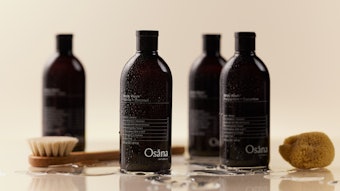The world is aging. And as we increasingly become a "gray hair society, the base of aging consumers looking to welcome hair products that make them look younger has never been bigger. Indeed, reflecting its popularity, new research from Mintel reveals hair colorants is the only hair care sub-category to have increased its share of global product development, accounting for 15% of global new hair care product launches in 2012, up from 11% in 2008.
Showcasing global hair care trends at in-cosmetics Asia in Thailand, Mintel revealed India will be the star performer in the hair colorant market in the Asia-Pacific region over the next five years. Mintel’s research shows that the market, valued at an estimated $382 million in 2012, is expected to grow a massive 110% between 2012 and 2016.
Today, the largest market for hair colorants in Asia-Pacific is Japan with $1 billion sales in 2012. Despite being still a small market, South Korea—valued at $230 million in 2012—is also forecast to grow rapidly, with a predicted 120% growth between 2012 and 2016 to reach $505 million. In addition, Thailand, with a hair coloring market valued at an estimated $104 million in 2012, is also set to see swift growth, with Mintel forecasting an increase of 40% over the same period to reach $144 million.
Vivienne Rudd, director of global insight, beauty and personal care at Mintel, said, “There is scope for the hair coloring category to recruit new users with new formats and formulations that promise ease of application and enhanced performance. In developing markets such as India, these developments will help to encourage consumers to trade up from traditional, low-cost products to more sophisticated products that use familiar ingredients and claims and add a more cosmetic twist, promising luxuriant, shining color and professional results at home.”
In Europe, the U.K. remains the largest hair colorants market, with an estimated $550 million in sales in 2012. Germany ($413 million in 2012), Russia ($430 million) and France ($370 million) follow. Meanwhile, despite being the largest hair colorant market in the world, the U.S. has been slow moving with $2.1 billion sales in 2012, up from $1.7 billion in 2008.
And while China remains the fastest-growing market for shampoo and conditioners—it is expected to grow 48% between 2012 and 2016—in the region there is also huge potential for natural hair colorants which target the aging population with safe, natural formulations. Botanical and herbal is already one of the leading claims in China’s colorant launches, accounting for 76% of total launches in the category in 2013 (to September 2013) up from 71% in 2012.
“Natural hair colorants hold great promise in China, with future products evolving from just one or two natural ingredients to take in an array of botanical oils and plant extracts. An emphasis on safety will not only ensure product take up, it will also encourage frequent reapplications. Henna, for example, offers an attractive marketing story, mimicking the success of rhodiola in the skin care category, which has become synonymous with a cure for skin problems for some Chinese consumers,” Rudd explains.
Globally, the most popular claims in hair coloring new product launches are those that help to brighten or illuminate the hair (72% of new hair colouring products launched between January and September 2013 carried the claim), long-lasting (62%), ease of use (54%) and botanical/herbal (44%).









